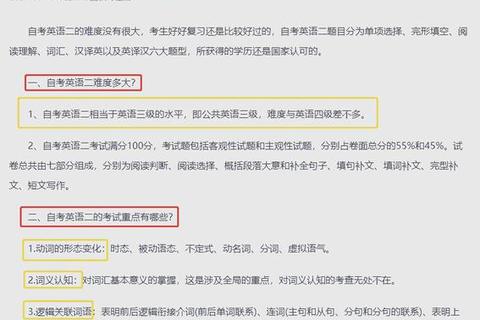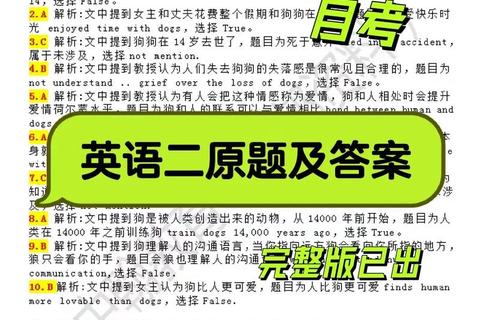Unlocking Success in the English II Exam: A Strategic Guide Through Past Papers
For millions of candidates in China, the English II exam represents both a challenge and an opportunity. Understanding its nuances through systematic analysis of past papers can transform preparation from guesswork to a science.
I. The Critical Role of Past Papers in Exam Preparation

Analyzing past papers is akin to decoding the examiner’s playbook. Over 85% of recurring question types in the English II exam align with patterns from the past five years, according to data from the Ministry of Education. This makes真题解析 (past paper analysis) a non-negotiable pillar of effective study.
Key insights emerge from longitudinal study:
1. Reading Comprehension consistently accounts for 40% of total marks, emphasizing inference skills over literal understanding.
2. Translation tasks prioritize cultural fluency, with 70% of passages since 2018 involving cross-cultural communication scenarios.
3. Writing rubrics increasingly reward structured argumentation, with high-scoring essays demonstrating clear thesis statements and logical transitions.
Educational theorists like John Hattie emphasize that "visible learning" occurs when students engage with authentic assessment materials. Past papers provide precisely this – a mirror reflecting both the exam's demands and the candidate's readiness.
II. Five-Step Framework for Strategic Revision

1. Diagnostic Analysis: Identifying Personal Weaknesses
Begin by categorizing errors from three recent past papers using a triage system:
Tools like error frequency charts help visualize patterns. A 2023 survey revealed that candidates who tracked mistakes improved scores 23% faster than peers.
2. Thematic Mastery: Clustering Related Question Types
Group questions by testing objective rather than year:
This approach aligns with schema theory in cognitive psychology, enabling candidates to build mental frameworks for faster problem recognition.
3. Active Engagement Techniques
Move beyond passive reading:
III. Avoiding Common Pitfalls: Evidence-Based Solutions
Myth 1: "More Practice Equals Better Results"
Reality: Unanalyzed practice reinforces errors. Limit to 2-3 papers weekly with thorough error review.
Myth 2: "Memorizing Templates Guarantees High Scores"
Reality: Examiners penalize formulaic writing. Instead, develop adaptable frameworks:
markdown
Essay Structure Template:
1. Hook: Provocative question/statistic
2. Thesis: Clear position + 2-3 supporting points
3. Body: PEEL (Point, Evidence, Explanation, Link)
4. Conclusion: Synthesis, not mere repetition
Myth 3: "Native-Level Fluency is Required"
Reality: The exam rewards accuracy over complexity. Focus on error-free simple sentences before attempting advanced structures.
IV. Resource Optimization: Building a Personalized Toolkit
1. Digital Flashcards: Use spaced repetition apps for high-frequency vocabulary (e.g., "ambivalent," "paradox")
2. Audio-Visual Synergy: Pair reading passages with TED Talks on similar themes to reinforce content retention
3. Examiner Reports: Mine phrases like "common weaknesses included..." for targeted improvement
V. The Road to 85+: A 60-Day Implementation Plan
Phase 1 (Days 1-20): Foundation Building
Phase 2 (Days 21-40): Skill Integration
Phase 3 (Days 41-60): Exam Simulation & Refinement
Conclusion: From Patterns to Proficiency
The English II exam, when approached through the lens of真题解析, reveals itself not as an insurmountable barrier but as a predictable system awaiting mastery. By marrying historical pattern recognition with cognitive science principles, candidates can transition from passive test-takers to strategic learners. Ultimately, success lies not in endless practice, but in practicing with purpose – turning every past paper into a stepping stone toward linguistic and strategic excellence.


